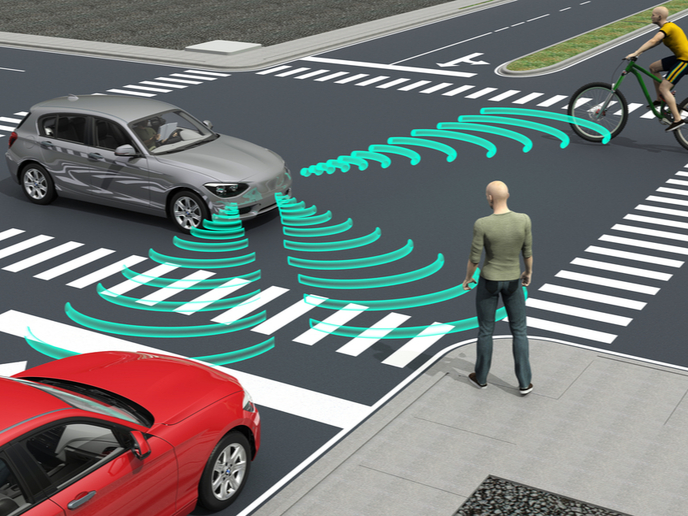5G to unlock the potential of automated driving
V2X-supported automated driving by will dramatically improve safety and driving comfort. By sharing data with surrounding vehicles and infrastructure, V2X systems can raise driver awareness about upcoming potential dangers and dramatically improve collision avoidance. V2X refers in particular to the car's communication system, where information from sensors and other sources travels through high-bandwidth, low-latency and high-reliability links. Led by Ericsson, the EU-funded project 5GCAR(opens in new window) demonstrated and validated concepts of building a V2X network that uses 5G in novel ways. Work has mainly revolved around developing novel components for radio interface and network architecture designs to meet the unprecedented stringent V2X requirements for the automotive industry. Innovations on the radio interface level “Offering latency-sensitive services requiring extremely high reliability, availability and security across a wide coverage area comes at the expense of providing high data rates,” notes project coordinator Dr Mikael Fallgren. To address this challenge, the project proposed several advanced infrastructure, sidelink and positioning technology components. Researchers proposed use of both centimetre and millimetre-wave (mmWave) frequency bands as candidate spectrums for achieving the high mobile data rate targets. Amongst the key related technologies studied were realistic multi-antenna schemes, mmWave broadcast and beamforming schemes, high-mobility channel tracking, diversity techniques, resource allocation and management, and interference control techniques. Dynamic multiplexing of different traffic types and radio frame design were also investigated. The proposed concepts related to 5GCAR’s sidelink-based V2X technology included a network-assisted discovery mechanism, reference signal and synchronisation signal design, adjacent channel interference mitigation, radio-resource management, and power control and scheduling mechanisms. Undoubtedly, 5GCAR’s sidelink proposed components can complement cellular communications to enhance V2X service reliability. A combination of sophisticated tracking algorithms like the particle filter and radio-based positioning are key to improving positioning accuracy. 5GCAR investigated a positioning algorithm for the case involving a single base station and antenna arrays both at the base station and the terminal. Possible extensions of the positioning protocol for future standardisation were also studied. Innovations on network architecture level 5GCAR proposed advanced network architecture concepts and support V2X services and applications. Enhancements covered a broad range of fields including network orchestration and management, network security, multi-connectivity cooperation and edge computing. The definition of flexible and reconfigurable road-side units and the related concept of smart zones is a representative example. New procedures were proposed to increase network awareness. Related technologies enable V2X services to inform the network about the service’s area of reference, vehicle trajectory, amount of data to be transmitted, expected service duration and more. Such information should be either used to optimise service delivery on the network side or inform the service about the network’s capability to fulfil the service. The project has also highlighted the use of multiple links (both direct vehicle-to-vehicle and vehicle-to-network) and multiple radio-access technologies – sub-6 GHz and mmWaves – of paramount importance to improve reliability and data rates. Other architectural solutions to support the deployment of use cases in multi-operator scenarios were also provided. Overall, 5GCAR proposed radio interface and network architecture solutions leveraging 5G tailored to the needs of the automotive industry. “Our technical solutions target very low latencies below 5 milliseconds, very high reliability (99.999 %) and vehicle positioning accuracy of below a metre,” added Fallgren.







